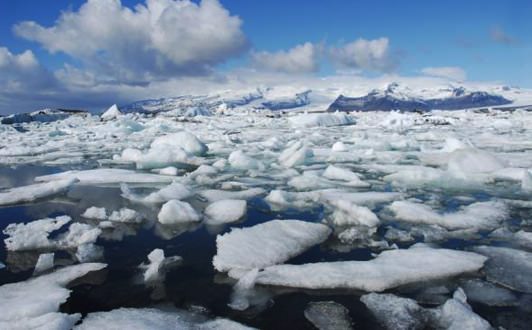The world is getting warmer, as greenhouse gases reach historic highs and Arctic sea ice melts, making 2013 one of the hottest years on record, international scientists said on Thursday.
The annual State of the Climate report 2013 is a review of scientific data and weather events over the past year, compiled by 425 scientists from 57 countries.
In Australia, it proved to be the number one warmest year on record.
Similar trends have also been confirmed in the oceans. Again, independent datasets identify 2013 as being in the top ten hottest years on record for sea surface temperatures.
This warming extended to the Arctic, where sea ice extent recovered slightly from a record low in 2012 but was still at its sixth lowest since satellite observations began in 1979.
Driven by ice melt in the Arctic and elsewhere, global mean sea level continued to rise, increasing by 3.8 millimetres.
“These findings reinforce what scientists for decades have observed: that our planet is becoming a warmer place,” said NOAA administrator Kathryn Sullivan.
But perhaps most concerning of all is that the concentration of atmospheric carbon – the greenhouse gas largely responsible for global warming – reached a historically high global average of 395.3 parts per million (ppm) over 2013.
April of this year proved to be the first month in human history in which levels of CO2 averaged at over 400 ppm, suggesting the trends observed in State of the Climate 2013 are only set to grow more severe.
“The take-home message here is that the planet — its state of the climate — is changing more rapidly in today’s world than at any time in modern civilization,” Tom Karl, director of NOAA’s National Climatic Data Center, told Climate Central.
“If we want to do an analogy to human health, if we are looking at our weight gain and we are trying to maintain an ideal weight, we are continuing to see ourselves put on more weight from year to year,” he said.
Scientists fear that on our current trajectory, mankind will fail to limit global temperature rises to below 2C from pre-industrial times. Above this threshold, suggested by scientists and agreed by world leaders, experts believe irreversible tipping points will be set in motion.
In a landmark report published last year, the Intergovernmental Panel on Climate Change (IPCC) set the world’s first ‘carbon budget’.
The report warned that mankind must emit no more than 1 trillion tonnes of carbon by 2100 to have just a decent chance of keeping temperatures below the target. By 2011, around 530 gigatonnes had already been emitted.
According to some analyses, the world will spend this carbon budget before 2050, but experts insist there is still hope.
A report submitted to the UN this week found that with international cooperation and significant investment in energy efficiency, low-carbon energy and fuel switching, the world’s biggest polluters could decarbonise before it is too late.
Agencies/Canadajournal

 Canada Journal – News of the World Articles and videos to bring you the biggest Canadian news stories from across the country every day
Canada Journal – News of the World Articles and videos to bring you the biggest Canadian news stories from across the country every day

